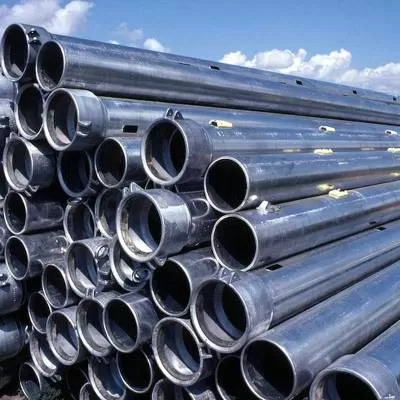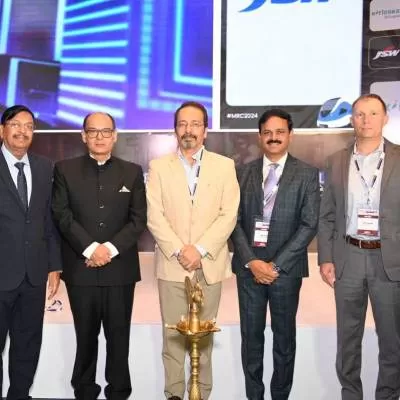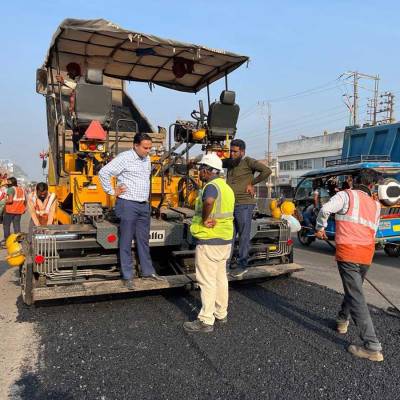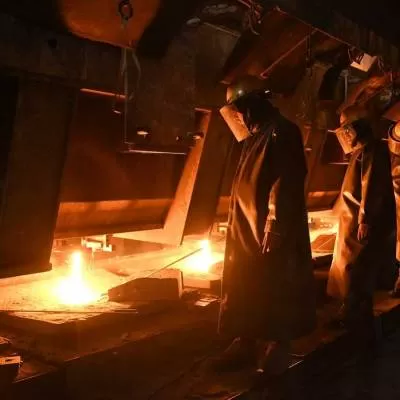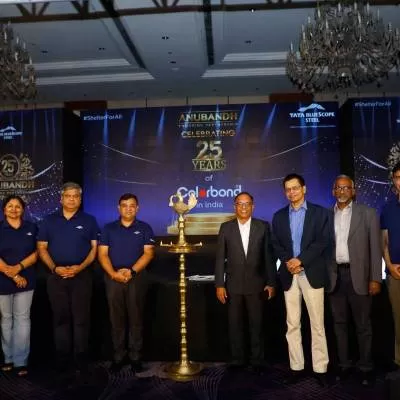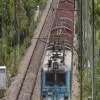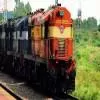- Home
- Building Material
- Steel
- Steel bright
Steel bright
Good news: India has been setting new records in steel consumption and production on the back of increasing demand from the automobile, engineering and construction sectors. In 2011, an output of 73.6 million tonne (MT) made India the world's fourth largest steel-producing nation and production grew to 76.7 MT in 2012. The long-term picture is even stronger.
Easing supply-side challenges
Figures from the World Steel Association show that over the five-year period from 2008 to 2012, steel production grew 33 per cent in India, second only to China (39 per cent) amongst the world's top five producing nations. Steel consumption in India grew at 7.7 per cent per annum over the last decade as against 4 per cent globally. According to Sushim Banerjee, Director General, Institute for Steel Development & Growth (INSDAG), "Per capita consumption of steel has grown from 24 kg in 2004 to 55 kg in 2011. The fact that it's still much lower than the global average of 215 kg shows the huge scope for steel production and consumption here."
In the short-term however, steel manufacturers are contending with various challenges. "The slow pace of reforms and lacklustre GDP growth, slow infrastructure development and delays in starting new power projects are adversely affecting demand for steel," observes Sandeep Jajodia, Chairman & Managing Director, Monnet Ispat & Energy (MIEL). "The industry is facing a scarcity of raw materials, no thanks to import duty on iron ore. Also, several outstanding issues pertaining to coal and iron ore mines are making the going hard." And according to Ranjan Dhar, Head-National Sales, Essar Steel India, "Current markets are still conservative with marginal pick-up in projects, with ease in liquidity on the efforts of RBI anticipating a better quarter ahead."
Jajodia has some hope from Budget 2013. "Infrastructure should get a boost from the promised long-term debt funds and quick action on two new major ports at Sagar and in Tamil Nadu, series of highways, oil and gas blocks, and the development of two towns along the Delhi-Mumbai industrial corridor," he says. If these projects, especially road projects adding up to 3,000 km in Gujarat, Madhya Pradesh, Maharashtra, Rajasthan and Uttar Pradesh take off as promised in the first half of the new fiscal, Jajodia expects demand for steel to mark an upward trend. Investment allowances for projects worth Rs 100 crore and above will give the industry a further fillip.
Demand side adjustments
On the demand side, real estate and infrastructure developers are having a hard time as well. Tanuj Goel, Executive Director, KDP Infrastructure, has a grouse over the rising cost of steel. Its sharp rise of 35 to 40 per cent in the past two years is compelling builders to look for alternative options that mandate less steel. "One of these is standardised prefabricated walls and slabs," he says. These are increasingly being considered to reduce input costs by 15-20 per cent through material and labour savings. Prefabrication also saves about 40 per cent of construction time.
"Another option is lightweight blocks, which require 5 kg steel per sq ft compared to 6 kg in the case of regular bricks," adds Goel. "This translates into savings of about Rs 50 per sq ft, including the reduced outlay on account of labour. Moreover, the supply of regular bricks is unreliable."
Essentially, INSDAG's Banerjee notes that companies want more durable, light and aesthetic steel commodities boasting improved properties like higher yield, higher strength and corrosive resistance equivalent to imported grades, with no loss of formability or weld-ability. He suggests that companies use TMT bars in place of CTD bars, and particularly TMT Fe 500 in place of TMT Fe 415, to reduce construction costs.
Growing product specialisation
Demand is challenging steel manufacturers to shift from making commodity grades to specialise in niche grades in each product category and niche product lines. Differentiation is the order of the day; it represents a move up the value chain for many steel manufacturers. For example, Steel Exchange India (SEIL) is gearing up to launch micro-alloyed, high-grade, earthquake-resistant rebars and corrosion-resistant rebars in the market. According to B Satish Kumar, Managing Director, SEIL, "The proposed launches are part of our strategy to cater to demand for specialised products based on Indian BSI standards that are equivalent to global standards. As a greater number of high-rise construction project get underway, such demand is expected to increase manifold."
Micro-alloyed, high-grade, earthquake-resistant, high-strength ductile rebars will replace conventional TMT rebars, which are not recommended for use in high-rise structures and banned in high seismic activity prone zones in India. Some countries have altogether banned the use of TMT steel bars. Essentially, alloying steel with a few special elements like niobium, vanadium, etc, and refining the grain structure of steel increases the strength of the rebar.
Monnet Ispat & Energy's 1.5-mtpa integrated steel manufacturing facility, coming up in Chhattisgarh, will use technology from NCO Italy in a TMT bar mill with H-V configuration. The output will be FE-500/ FE-500D grades of reinforcement steel in sizes ranging from 8 mm to 40 mm with a variant of HCR/EQR quality. The resultant TMT bars will boast of higher UTS with guaranteed UTS/YS ratio and higher elongation to ensure excellent earthquake resistance. A plate mill augmented with on-line thickness, width, length and temperature measurement devices, a MESACON, Germany, innovation, will produce plates of 2,500-mm width with thickness ranging from 8 mm to 110 mm. Jajodia is convinced that only the best global technical knowhow should po¡wer steel mills producing products tailored for India's future construc¡tion needs.
Service as a differentiator
Service is poised to become a key differentiator of the steel segment. Jajodia expects the construction steel segment to gradually become a service-oriented market with price, availability, timely delivery and quality as crucial parameters. In response, MEIL is planning an extensive distributor/dealer network and company-owned stockyards pan India, supported by a young dynamic sales and marketing team.
"We aim to ensure better services, well-planned logistics and minimal freight charges," he says. "It's all part of an endeavour to offer customers competitive deals."
One view is that the greater number of infrastructure projects getting underway and the entry of overseas contracting companies in India are changing the game for steel manufacturers because service is one of the attributes these new players look for in a supplier. These players are novices in India; they come with no preconceived notions about brands and are eager to partner with suppliers who can provide quality steel products at competitive prices. All they care about is vendor performance and the ability to adopt their time-conscious and highly professional working culture. They want responsive, reliable and flexible services. Another distinct growing trend is preference for multiproduct suppliers who can cater to all the steel needs of construction companies.
Need for sensitisation
What would help boost these growing trends is sensitisation of users to the properties of steel and ways to improve construction outcomes. For instance, a positive about the steel segment is that major players are offering Indian customers the same high-strength grades used globally. Construction steel products graded IS2062 E250 and 350 have been around for long. Essar Steel recently launched 450-mpa yield strength steel for the construction of flyover bridges. "It's part of our new range with yield strength between 450 mpa and 600 mpa, which is highly durable, strong and resilient," says Dhar. "The speciality of 450-mpa yield strength steel is that it can reduce the weight of the structure while adding to strength." Only, takers for high strength steel are limited.
Weather-resistant steel is another product Dhar would like Indian construction companies to use more frequently. "Globally, this is one of the most sought-after grades of construction steel because it offers corrosion resistance in bare condition without any pre-painting," he explains.
According to Pankaj Agarwal, President, EPC Division, GVK Group, "Although steel innovations such as pre-engineered steel building components and steel formwork (table forms, etc) are being used in the Indian real-estate development sector, there's a lot of scope for the uptake of steel products in infrastructure to increase. For instance, steel pipe culverts and steel arch bridges can come in handy in the construction of underpasses in highways, waterways, tunnel portals and cut and cover tunnels. When effectively used, these products can drastically reduce construction time. Another area that can benefit from steel innovation is foundation works. Steel piles are extensively used in developed nations, but not so much in India."
Clearly, steel products are set to shine even brighter on the Indian construction horizon.
Quick Bytes
• India's steel production grew to 76.7 mt in 2012.
• Demand is challenging steel manufacturers to specialise in niche grades.
• Service is poised to become a key differentiator of the steel segment.
Stainless steel in construction
Stainless steel products for real estate and infrastructure utilities are rapidly growing in popularity. According to Achal Puri, Deputy General Manager-Marketing, JSL Architecture, "More developers are opting for stainless steel railings, water tanks and fixtures for commercial properties, high-rise residential apartments and houses for high-net-worth individuals as well as buyers looking for value for money. Growing awareness about green buildings and products and the willingness to invest upfront in products that look stylish and are long lasting are spurring this trend."
"Scope for stainless steel bus-stop shelters, entrance canopies and car parking is growing in municipalities such as those in Mumbai, Bengaluru, Coimbatore and Delhi," adds Puri. "These products have also found patrons in the well-informed corporation heads of cities like Alwar, Bhiwadi, Rohtak, Chindwara and Chandigarh as they have seen the long-term benefits in creating these multipurpose utility structures for public usage. Stainless steel creates a unique aesthetic environment that is easy to maintain. Compact ready-to-install station modules, 9 ft by 2.5 ft, are available at prices starting at Rs 160,000." Indian Railways is also gradually accepting stainless steel for platform amenities like benches, dustbins, railings, column cladding and even wheel carts. It has taken a lead from the Metro in this case. Further, Puri sees huge scope for stainless steel vehicle parking sheds for factories and industrial units as they enhance the factory environment and motivate workers by breaking the monotony of mild steel structures.
To share your views on the steel sector, with in at feedback@ASAPPmedia.com
Rising steel prices are compelling users to become more discerning about products and methods. And, in turn, manufacturers are focusing on product innovations and value-added services, discovers CHARU BAHRI. Good news: India has been setting new records in steel consumption and production on the back of increasing demand from the automobile, engineering and construction sectors. In 2011, an output of 73.6 million tonne (MT) made India the world's fourth largest steel-producing nation and production grew to 76.7 MT in 2012. The long-term picture is even stronger. Easing supply-side challenges Figures from the World Steel Association show that over the five-year period from 2008 to 2012, steel production grew 33 per cent in India, second only to China (39 per cent) amongst the world's top five producing nations. Steel consumption in India grew at 7.7 per cent per annum over the last decade as against 4 per cent globally. According to Sushim Banerjee, Director General, Institute for Steel Development & Growth (INSDAG), "Per capita consumption of steel has grown from 24 kg in 2004 to 55 kg in 2011. The fact that it's still much lower than the global average of 215 kg shows the huge scope for steel production and consumption here." In the short-term however, steel manufacturers are contending with various challenges. "The slow pace of reforms and lacklustre GDP growth, slow infrastructure development and delays in starting new power projects are adversely affecting demand for steel," observes Sandeep Jajodia, Chairman & Managing Director, Monnet Ispat & Energy (MIEL). "The industry is facing a scarcity of raw materials, no thanks to import duty on iron ore. Also, several outstanding issues pertaining to coal and iron ore mines are making the going hard." And according to Ranjan Dhar, Head-National Sales, Essar Steel India, "Current markets are still conservative with marginal pick-up in projects, with ease in liquidity on the efforts of RBI anticipating a better quarter ahead." Jajodia has some hope from Budget 2013. "Infrastructure should get a boost from the promised long-term debt funds and quick action on two new major ports at Sagar and in Tamil Nadu, series of highways, oil and gas blocks, and the development of two towns along the Delhi-Mumbai industrial corridor," he says. If these projects, especially road projects adding up to 3,000 km in Gujarat, Madhya Pradesh, Maharashtra, Rajasthan and Uttar Pradesh take off as promised in the first half of the new fiscal, Jajodia expects demand for steel to mark an upward trend. Investment allowances for projects worth Rs 100 crore and above will give the industry a further fillip. Demand side adjustments On the demand side, real estate and infrastructure developers are having a hard time as well. Tanuj Goel, Executive Director, KDP Infrastructure, has a grouse over the rising cost of steel. Its sharp rise of 35 to 40 per cent in the past two years is compelling builders to look for alternative options that mandate less steel. "One of these is standardised prefabricated walls and slabs," he says. These are increasingly being considered to reduce input costs by 15-20 per cent through material and labour savings. Prefabrication also saves about 40 per cent of construction time. "Another option is lightweight blocks, which require 5 kg steel per sq ft compared to 6 kg in the case of regular bricks," adds Goel. "This translates into savings of about Rs 50 per sq ft, including the reduced outlay on account of labour. Moreover, the supply of regular bricks is unreliable." Essentially, INSDAG's Banerjee notes that companies want more durable, light and aesthetic steel commodities boasting improved properties like higher yield, higher strength and corrosive resistance equivalent to imported grades, with no loss of formability or weld-ability. He suggests that companies use TMT bars in place of CTD bars, and particularly TMT Fe 500 in place of TMT Fe 415, to reduce construction costs. Growing product specialisation Demand is challenging steel manufacturers to shift from making commodity grades to specialise in niche grades in each product category and niche product lines. Differentiation is the order of the day; it represents a move up the value chain for many steel manufacturers. For example, Steel Exchange India (SEIL) is gearing up to launch micro-alloyed, high-grade, earthquake-resistant rebars and corrosion-resistant rebars in the market. According to B Satish Kumar, Managing Director, SEIL, "The proposed launches are part of our strategy to cater to demand for specialised products based on Indian BSI standards that are equivalent to global standards. As a greater number of high-rise construction project get underway, such demand is expected to increase manifold." Micro-alloyed, high-grade, earthquake-resistant, high-strength ductile rebars will replace conventional TMT rebars, which are not recommended for use in high-rise structures and banned in high seismic activity prone zones in India. Some countries have altogether banned the use of TMT steel bars. Essentially, alloying steel with a few special elements like niobium, vanadium, etc, and refining the grain structure of steel increases the strength of the rebar. Monnet Ispat & Energy's 1.5-mtpa integrated steel manufacturing facility, coming up in Chhattisgarh, will use technology from NCO Italy in a TMT bar mill with H-V configuration. The output will be FE-500/ FE-500D grades of reinforcement steel in sizes ranging from 8 mm to 40 mm with a variant of HCR/EQR quality. The resultant TMT bars will boast of higher UTS with guaranteed UTS/YS ratio and higher elongation to ensure excellent earthquake resistance. A plate mill augmented with on-line thickness, width, length and temperature measurement devices, a MESACON, Germany, innovation, will produce plates of 2,500-mm width with thickness ranging from 8 mm to 110 mm. Jajodia is convinced that only the best global technical knowhow should po¡wer steel mills producing products tailored for India's future construc¡tion needs. Service as a differentiator Service is poised to become a key differentiator of the steel segment. Jajodia expects the construction steel segment to gradually become a service-oriented market with price, availability, timely delivery and quality as crucial parameters. In response, MEIL is planning an extensive distributor/dealer network and company-owned stockyards pan India, supported by a young dynamic sales and marketing team. "We aim to ensure better services, well-planned logistics and minimal freight charges," he says. "It's all part of an endeavour to offer customers competitive deals." One view is that the greater number of infrastructure projects getting underway and the entry of overseas contracting companies in India are changing the game for steel manufacturers because service is one of the attributes these new players look for in a supplier. These players are novices in India; they come with no preconceived notions about brands and are eager to partner with suppliers who can provide quality steel products at competitive prices. All they care about is vendor performance and the ability to adopt their time-conscious and highly professional working culture. They want responsive, reliable and flexible services. Another distinct growing trend is preference for multiproduct suppliers who can cater to all the steel needs of construction companies. Need for sensitisation What would help boost these growing trends is sensitisation of users to the properties of steel and ways to improve construction outcomes. For instance, a positive about the steel segment is that major players are offering Indian customers the same high-strength grades used globally. Construction steel products graded IS2062 E250 and 350 have been around for long. Essar Steel recently launched 450-mpa yield strength steel for the construction of flyover bridges. "It's part of our new range with yield strength between 450 mpa and 600 mpa, which is highly durable, strong and resilient," says Dhar. "The speciality of 450-mpa yield strength steel is that it can reduce the weight of the structure while adding to strength." Only, takers for high strength steel are limited. Weather-resistant steel is another product Dhar would like Indian construction companies to use more frequently. "Globally, this is one of the most sought-after grades of construction steel because it offers corrosion resistance in bare condition without any pre-painting," he explains. According to Pankaj Agarwal, President, EPC Division, GVK Group, "Although steel innovations such as pre-engineered steel building components and steel formwork (table forms, etc) are being used in the Indian real-estate development sector, there's a lot of scope for the uptake of steel products in infrastructure to increase. For instance, steel pipe culverts and steel arch bridges can come in handy in the construction of underpasses in highways, waterways, tunnel portals and cut and cover tunnels. When effectively used, these products can drastically reduce construction time. Another area that can benefit from steel innovation is foundation works. Steel piles are extensively used in developed nations, but not so much in India." Clearly, steel products are set to shine even brighter on the Indian construction horizon. Quick Bytes • India's steel production grew to 76.7 mt in 2012. • Demand is challenging steel manufacturers to specialise in niche grades. • Service is poised to become a key differentiator of the steel segment. Stainless steel in construction Stainless steel products for real estate and infrastructure utilities are rapidly growing in popularity. According to Achal Puri, Deputy General Manager-Marketing, JSL Architecture, "More developers are opting for stainless steel railings, water tanks and fixtures for commercial properties, high-rise residential apartments and houses for high-net-worth individuals as well as buyers looking for value for money. Growing awareness about green buildings and products and the willingness to invest upfront in products that look stylish and are long lasting are spurring this trend." "Scope for stainless steel bus-stop shelters, entrance canopies and car parking is growing in municipalities such as those in Mumbai, Bengaluru, Coimbatore and Delhi," adds Puri. "These products have also found patrons in the well-informed corporation heads of cities like Alwar, Bhiwadi, Rohtak, Chindwara and Chandigarh as they have seen the long-term benefits in creating these multipurpose utility structures for public usage. Stainless steel creates a unique aesthetic environment that is easy to maintain. Compact ready-to-install station modules, 9 ft by 2.5 ft, are available at prices starting at Rs 160,000." Indian Railways is also gradually accepting stainless steel for platform amenities like benches, dustbins, railings, column cladding and even wheel carts. It has taken a lead from the Metro in this case. Further, Puri sees huge scope for stainless steel vehicle parking sheds for factories and industrial units as they enhance the factory environment and motivate workers by breaking the monotony of mild steel structures. To share your views on the steel sector, with in at feedback@ASAPPmedia.com






